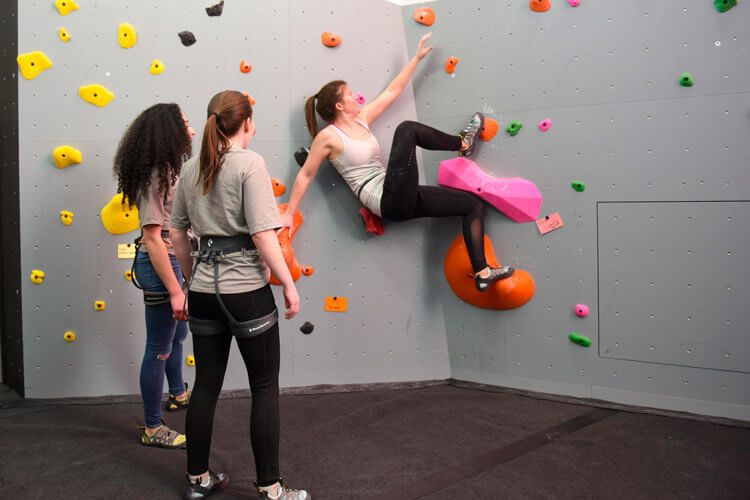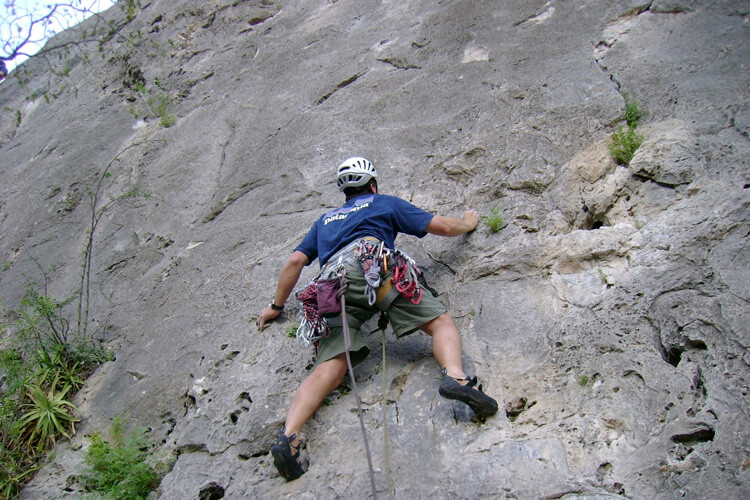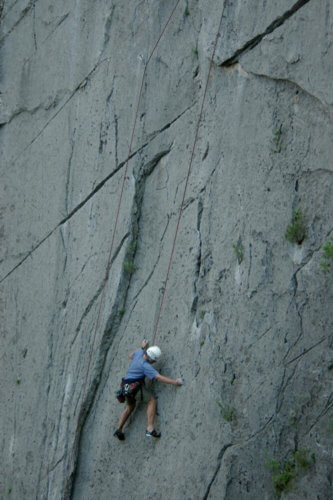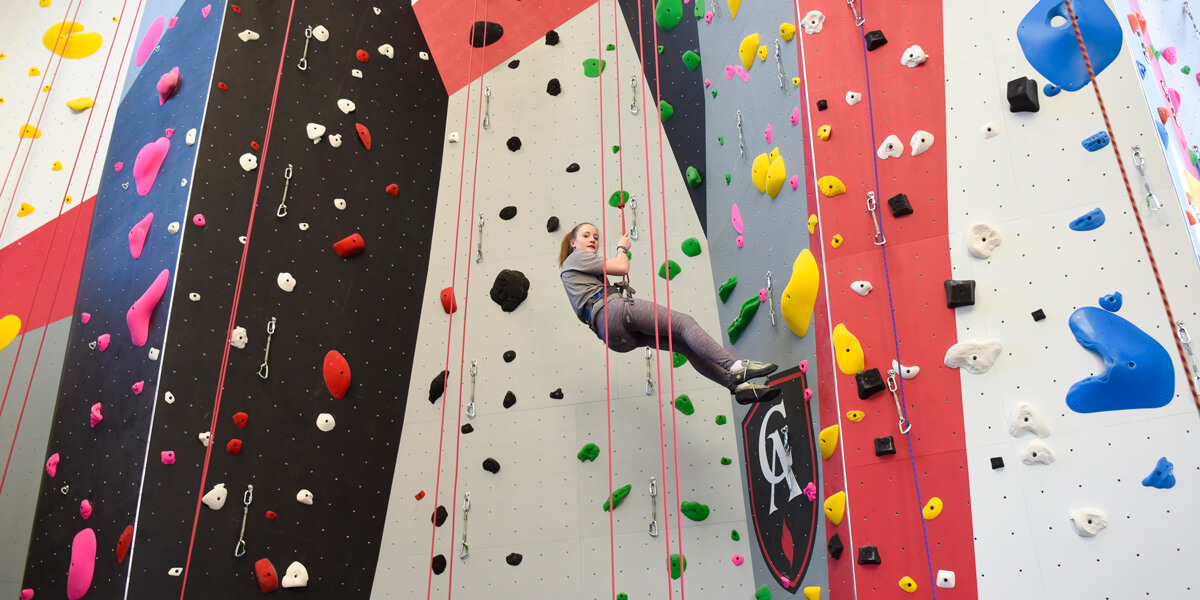One thing I look forward to at the start of every term is teaching a new class. This spring trimester, I am taking advantage of our tremendous new climbing facility and offering a rock climbing course for Colorado Academy Upper School students during the school day.
This new facility has 40-foot tall routes, 18 lanes of climbing, and a first-rate bouldering area. But one of the first things I will tell my students, and any CA student in Lower, Middle, and Upper School who will have the chance to use this space in PE and sports, is that their learning in this new facility is just a first step.

Many young climbers (too many, in my opinion) spend all their time in climbing gyms. For me, the gym is just preparation for outdoors and climbing on real rock. I fell in love with outdoor rock climbing decades ago because it challenges me physically, mentally, and emotionally. Climbing real rock is where the challenges are much more real and much more fun.
Climbing is an endeavor in which humans try to push themselves beyond natural obstacles and their own physical limitations. That means being smart, listening to your inner voice, and knowing your physical and mental limits, but also being unafraid to redefine those limits, safely. The goal of my class is to introduce beginning climbers to this world. I want them to be safe and also learn how they can push themselves to achieve what they think is impossible.
The yin and yang of climbing
The yin and the yang of climbing is learning how to take risk, but also learning how to mitigate risk. It is understanding that success is not reaching the top, but reaching the bottom, safely. True, there are climbers like Alex Honnold who free climbed (meaning, without a rope) the face of El Capitan in Yosemite National Park. Some free climbers say that this style is more “pure.”
I tend to disagree, and I would never condone such an attempt. There are few people who could or should operate with unmitigated, life-or-death risk. While it would be easy to dismiss Honnold’s feat as reckless, like any good climber or any good student, he rehearsed, practiced, and trained, over and over again. He was meticulous about every detail, understanding his dependence on others to complete the task, and honest about his own abilities. He was also willing to test his limits until he had attained the self-confidence that helped him accomplish what, to most, is impossible. It is this convergence of physical, intellectual, and emotional challenges that, for me, defines the “purity” of the sport, and that makes it such a joy to introduce it others.

Overcoming the fear of falling
I remember one particular climb I attempted early in my climbing career while living in Austin, Texas. It’s an overhung, slightly pocketed face called Prototype Wall at Reimers Ranch. It’s a 5.10c, meaning it’s rated a demanding climb. I had been climbing for just a few months when I decided I really wanted to lead this climb. Lead climbing is when you start from the bottom and protect the climb as you ascend. It’s riskier, because when you fall, you have to fall to your last piece of protection. In that process, one generates a lot of force.
Also, in the earlier stages of the climb, there is a greater risk of hitting the ground. This climb had a particularly imposing start. I remember pulling up over a bulge of rock to clip the first bolt. Then, there was this reach pocket you had to stab and use to get to the next phase of the climb. The middle section was straightforward, but the final portion had some “reachy,” thin holds before you got to the anchors at the top.
When I first tried this, I barely could get to the first bolt without falling. Then, once clipped, I would fall over and over and over again before making it through the next section. Most often, I fell not because of lack of strength—I was 25 years old and super fit. It was because I let my fear of falling affect my ability to push on. I would freeze up mentally and fail. But, after one long Saturday, I finally got the first part of the climb and just willed myself onward. I found that the more I fell, the more I learned to trust my belayer and climbing partner. I was able to trust my gear. Something clicked, and with my friends cheering, I made it to the top.

How good things come with struggle
As we live in an age of instant gratification and a never-ending search for happiness at every moment of our lives, I think we forget that good things come with struggle. Most adults get this, but we tend to do a poor job of helping our children understand it.
At CA, we deliberately encourage students to challenge themselves—to sing in the choir, play the guitar, learn a global language, perform in a play, create a new club, take part in an outdoor adventure—to find ways that test their strength, fortitude, and perseverance—and then be willing to work hard and redefine themselves. Whether on the climbing wall or in the classroom, what better lessons can we offer?
A postscript to my Prototype Wall climbing story. Just a couple of months ago, climbers posted numerous notes online about what a sad day it was in central Texas. The Prototype Wall is now gone. Water got behind a flake, and the entire limestone face sheered off and came crumbling down. That is another lesson that climbing teaches. If we fail to face the challenges in front of us when they happen, we may be passing up an opportunity to grow, and the challenge left untaken might have been the very one we needed to tackle.
